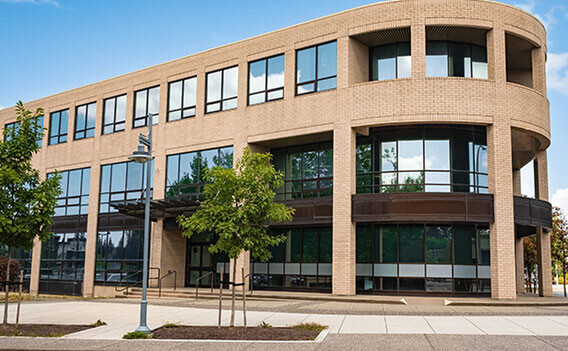The average price per square foot for commercial property in 2025 fluctuates depending on several factors. As real estate trends evolve, property prices adjust to market demands and economic shifts.
From location to tenant demand and market conditions, several dynamics shape pricing. Let’s uncover what drives these costs today.
Market Location and Its Influence on Prices
The location of a commercial property has a significant impact on its pricing. Areas with higher demand for business activity typically see higher prices per square foot. Urban locations with dense populations and accessibility to infrastructure often command premium prices.
On the other hand, less centralized areas may have lower rates due to less foot traffic and fewer business opportunities. Buyers need to consider location-specific dynamics, such as proximity to major roads, transport hubs, and surrounding amenities. These can either elevate or reduce a property's value.
Commercial Property Types and Their Costs
The type of property also plays a role in determining the average price per square foot for commercial property in 2025. Different types of commercial spaces, such as office buildings, retail spaces, or industrial properties, carry distinct pricing structures.
Office spaces typically demand higher prices in city centers due to their need for centrality and amenities. Retail spaces, particularly those in high-traffic areas, can also have a high cost per square foot due to consumer demand and visibility. Industrial properties often have a lower cost, although specialized properties such as warehouses may have a premium depending on their function and location.
Each type of commercial property has specific demands and features that influence pricing. For instance, office spaces might include costs for utilities, building management, and location–all contributing to the higher cost per square foot. Conversely, industrial properties may be more affordable but require significant investment in custom setups or logistical needs.
Economic Conditions Impacting Property Values
Economic conditions directly affect the prices of commercial properties. During periods of economic growth, businesses expand. This can lead to higher demand for commercial spaces. The surge in demand naturally drives up prices.
On the other hand, during economic downturns, businesses may scale back. This will result in lower demand for commercial real estate. As businesses struggle to maintain cash flow, the price per square foot of commercial properties tends to decrease, as sellers must adjust to market conditions.
Inflation, interest rates, and broader economic performance all affect the value of commercial properties. For instance, rising interest rates can make financing more expensive. This will reduce the amount of investment in commercial real estate.
However, when the economy is doing well, investors are more likely to purchase properties, inflating prices and increasing competition.
Tenant Demand and Pricing Factors
Tenant demand plays an integral role in determining the price per square foot of commercial properties. A higher demand for tenants means owners can command higher rents–which directly impacts the property's value.
In markets where businesses thrive and vacancy rates are low, prices per square foot for commercial properties increase as demand outpaces supply. Properties in high-demand locations such as shopping centers or office buildings near public transit often see elevated pricing.
In contrast, properties with high vacancy rates or located in less desirable areas typically see reduced tenant demand and therefore lower prices. This factor ties directly to the health of the local economy, as well as the reputation and desirability of the area.
Size and Layout Influence on Property Pricing
The size of a commercial property is another determining factor for its price. Larger properties naturally command higher prices, especially when located in sought-after areas.
The amount of usable space in a building also plays a role. It affects the potential for revenue generation through leasing. A larger space with a flexible layout can be adapted to a variety of uses. This will increase the average price per square foot for commercial property in 2025.
Properties with irregular layouts or inefficient use of space often see a reduction in their price per square foot. Commercial properties with flexible, open floor plans or multiple entry points tend to attract higher demand–especially from businesses looking to optimize their workspace.
Age of Property and Price Variations
The age of a property also influences the price per square foot. Older buildings may have lower prices due to their outdated facilities, higher maintenance needs, or less efficient designs. However, they can also present opportunities for renovation or redevelopment. They are attractive to investors willing to put in the work to modernize the property.
Newer buildings, with modern amenities and up-to-date facilities, typically demand a higher price per square foot. These properties require less immediate work and appeal to businesses looking for turn-key solutions.
As a result, younger properties often command a premium due to their convenience and efficiency. The age of a property can determine the level of investment needed to bring it up to current standards.
Zoning and Land Use Regulations Effects
Zoning laws and land use regulations significantly affect commercial property prices. Properties located in areas with flexible zoning laws may attract higher interest from developers who can easily repurpose or redevelop them for different uses. These properties offer more opportunities for growth and therefore may carry a higher price per square foot due to their potential.
In contrast, properties in strictly zoned areas or with limited land use options may have a reduced price per square foot due to their limited marketability.
Properties with restrictive zoning laws are typically less versatile. They are less appealing to investors who prefer properties that can adapt to various business needs. Zoning laws therefore contribute to the pricing strategy for commercial properties.
Renovations and Upgrades Affecting Prices
Renovations and upgrades to a commercial property can significantly impact its price. A property that has undergone recent renovations, such as modernized electrical systems, new facades, or updated interiors, is likely to be priced higher due to the added value. These upgrades make the space more appealing to tenants and investors–improving its functionality and aesthetic appeal.
On the flip side, properties in need of substantial repairs or improvements may be priced lower. Buyers looking for opportunities to invest in fixer-uppers may be attracted to these properties, as they offer potential for profit after renovations.
Market Comparisons for Urban vs Rural Areas
Market comparisons between urban and rural areas highlight stark contrasts in property prices. Urban commercial properties, particularly those in cities with high population densities, tend to have a much higher price per square foot due to their desirability. These properties benefit from proximity to amenities, high traffic, and a larger customer base.
In contrast, rural commercial properties typically have a much lower price per square foot. While they may offer lower costs for acquisition, they may also come with limitations such as fewer businesses and less demand. Rural areas might appeal to specific industries but do not command the same high prices seen in metropolitan centers.
Supply and Demand Trends in Commercial Real Estate
Supply and demand trends are vital factors influencing commercial property prices. When supply is low and demand is high, the price per square foot increases as competition for properties intensifies.
Conversely, when there is an oversupply of commercial properties, prices tend to decrease as landlords and sellers lower their expectations to attract tenants or buyers.
Current market trends indicate that urban areas continue to experience strong demand for commercial properties, especially in prime locations. As demand for these spaces increases, prices will continue to rise.
In contrast, areas with an oversupply of commercial properties may experience stagnant or even falling prices. This creates more favorable conditions for buyers.
Interest Rates and Their Effect on Prices
Lower interest rates stimulate commercial property demand and drive-up prices. When borrowing is cheaper, investors find it more affordable to finance purchases. This can lead to increased competition and higher property values.
However, higher interest rates make borrowing expensive, which can dampen demand for commercial properties. With fewer investors willing to take on expensive loans, the price per square foot may decrease. Therefore, interest rates have a direct correlation with property pricing–impacting both buyers and sellers.
Neighborhood Developments and Value Changes
Neighborhood developments play a key role in influencing property values. New infrastructure projects, such as transportation links or commercial developments, can make an area more attractive to businesses, raising property prices. As these neighborhoods develop, commercial properties in the area become more valuable due to their proximity to newly built amenities and services.
On the other hand, the decline of a neighborhood due to factors such as increased crime or deteriorating infrastructure can cause property values to drop. Buyers must evaluate the long-term prospects of a neighborhood. These changes can directly influence the future value of commercial properties.
Commercial Property Market Forecasts
The commercial property market forecast for 2025 suggests that demand will remain strong in key urban centers, particularly for properties located in business districts or close to major transportation hubs.
However, fluctuations in economic conditions, such as interest rates or inflation, could impact the overall market trend. While urban properties will likely continue to see a rise in prices, rural areas may experience slower growth.
In the coming years, more developers will likely focus on sustainable and flexible commercial spaces to meet changing business needs. This focus on sustainability and adaptability could influence price trends–especially for properties that incorporate green building practices and energy-efficient technologies.
Seasonal Fluctuations in Property Pricing
Seasonal fluctuations in property pricing are common, with certain times of the year seeing higher prices. Typically, spring and summer months experience increased demand for commercial properties, driving up prices.
In contrast, the winter months tend to see slower activity, which can lead to lower prices. Businesses often look to move or expand during the warmer months. This can contribute to the seasonal shift in pricing.
The timing of a property transaction can, therefore, impact the price per square foot. Buyers who plan their purchases around seasonal trends may be able to secure better deals during the off-season. Meanwhile, sellers may take advantage of the busy periods to command higher prices.
Hire the Best Professional Construction Contractors in New York Now
If you're looking to enhance your commercial property project, professional construction contractors in New York can make all the difference.
PE Builders offers exceptional craftsmanship and a commitment to excellence in every project, from custom office spaces to retail builds. With our commercial building services in New York, we deliver spaces that are functional, aesthetically pleasing, and built to last.

